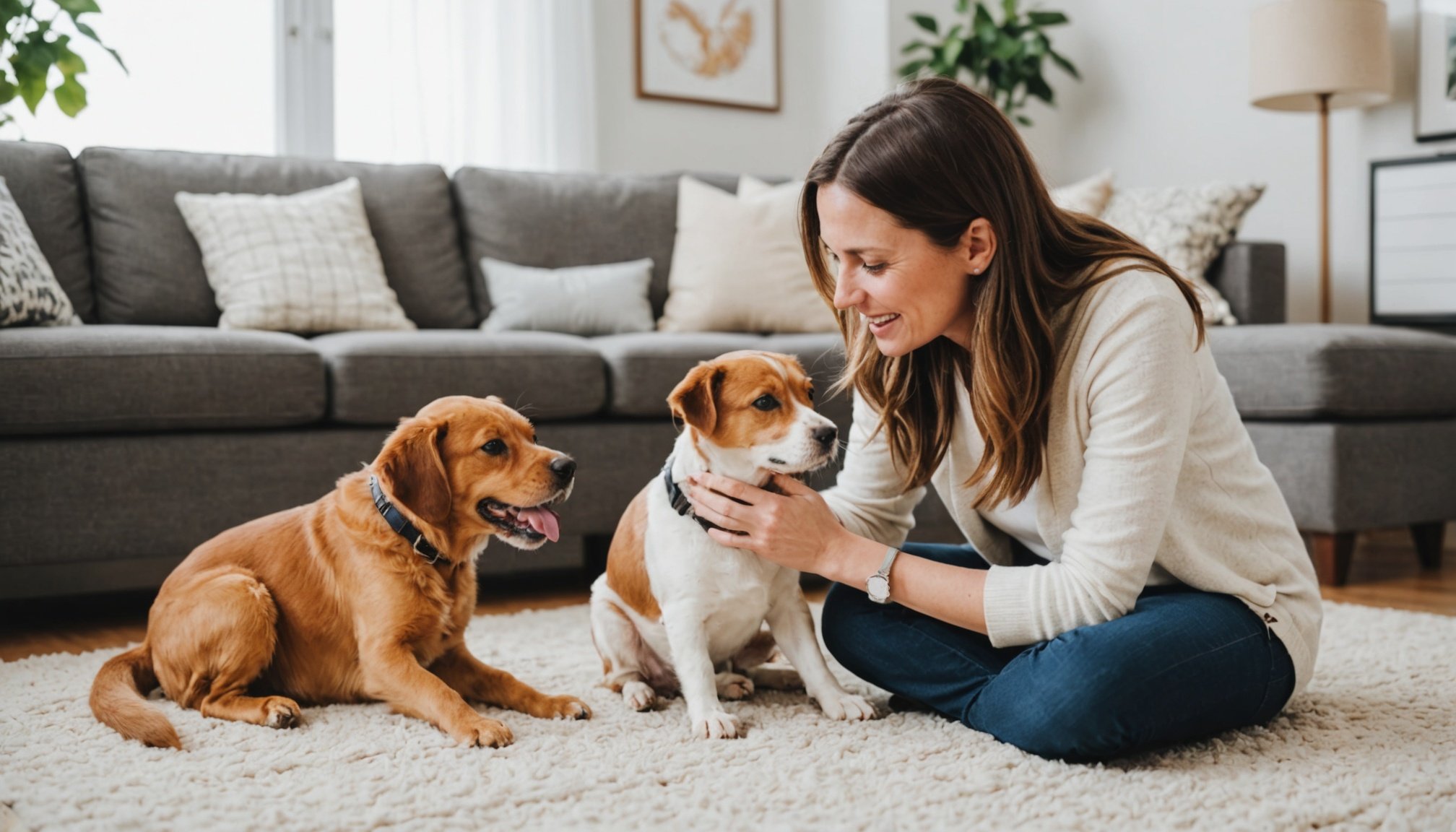Expecting a new baby is an exciting time, but it comes with its own set of challenges, especially when you have pets at home. You may be thrilled about welcoming your little one, but your furry friends might feel anxious about the changes that will soon take place in their environment. The key is to prepare your pets—be it dogs or cats—for the arrival of the new family member. This article will guide you through effective strategies to help your pets adjust, ensuring a harmonious household when your baby arrives.
Understanding Your Pet’s Behavior
Before you start preparing your pets for the upcoming arrival, it’s essential to understand their behavior. Animals can be sensitive to changes in their environment. They may not understand why you are spending more time getting ready for the baby or why there are new items appearing in the house.
In parallel : What are the essential items to include in a hospital bag for labor and delivery?
Your dog or cat might exhibit signs of anxiety or jealousy as they sense the shift in attention. Common behaviors to look out for include increased clinginess, changes in eating habits, or even regression in potty training.
It’s crucial to observe how your pet reacts to your pregnancy. Does your dog follow you around more closely? Does your cat become more aloof? These behaviors can signal their feelings about the upcoming changes. Some pets can even pick up on your emotions, so if you’re feeling stressed, they might respond accordingly.
Also to read : Essential Skincare Tips for Expecting Mothers in the UK: How to Prevent Stretch Marks Naturally
Acknowledging these behaviors is the first step in preparing them for the baby. Taking time to spend with your pets, maintaining their routines, and reassuring them can significantly help in easing their anxiety. Make sure to engage with them regularly, so they don’t feel neglected. This focus on your pets will create a sense of stability in their lives as they anticipate the new addition to your family.
Gradual Introductions to Baby Items
As you prepare for the arrival of your baby, you’ll likely begin to acquire various baby items such as cribs, toys, and clothes. Introducing these items gradually to your pets can help them acclimate to the new environment. Start by placing baby items in rooms where your pets spend time. This will help them become familiar with the sights and smells without overwhelming them all at once.
You might want to begin with smaller items like baby blankets or toys. Allow your pet to sniff these new objects, showing them that there’s nothing to fear. Reward them with treats when they interact calmly with these items, reinforcing positive behavior.
As the due date approaches, consider bringing your pet into the nursery while you set it up. This will give them a chance to explore the area where the baby will be spending time. Keep an eye on their reactions; if they seem curious and relaxed, that’s a good sign. If they appear anxious, provide reassurance and limit their access until they seem more comfortable.
This gradual exposure will help them adjust to the changes in their space and will make the transition smoother when the baby finally arrives. It will also let your pets know that these new items are part of the family environment, rather than something they should be wary of.
Training and Setting Boundaries
Setting clear boundaries and establishing ground rules for your pets is vital as you prepare for your new arrival. With a baby in the house, it’s important to train your pets to understand what behaviors are acceptable. For dogs, this might involve reinforcing commands they already know, such as sit, stay, or leave it.
Consider enrolling your dog in a basic obedience class if they need a refresher. This will not only improve their behavior but also strengthen the bond between you and your pet. Training sessions should be consistent and positive, using treats as rewards for good behavior. The goal is to ensure that your dog understands what is expected of them around the baby.
For cats, the approach is slightly different. You may want to provide them with designated areas away from the baby’s space. Cats like to have their own territory, and a quiet place where they can retreat will help them feel secure. You can also use baby gates to restrict access to certain areas while still allowing them to roam the home.
Consistent training and boundary setting will help maintain a peaceful environment once the baby arrives. It will also prevent any potential incidents from occurring between your pets and the child, allowing you to manage interactions safely. Remember that both dogs and cats will need time to adjust to the new family dynamics.
Involving Your Pets in Baby Preparations
Involving your pets in the preparations for your new baby can help them feel included and reduce feelings of jealousy or anxiety. While they may not fully understand what is happening, they can sense the excitement and changes in your routine. One effective way to do this is by letting your pets be part of the preparations.
As you decorate the nursery or set up baby gear, allow your pets to explore the space. You might want to let your dog lie on a blanket in the nursery while you organize. Encourage your children to gently interact with their pets, explaining that a new baby will soon be joining the family. This will help instill a sense of familiarity with the idea of a baby being around.
Additionally, consider including your pets in family activities. If you take family walks, bring your dog along. This helps keep their routines intact during this busy time. For cats, engage them with new toys or climbing structures to keep them entertained while you prepare for the baby.
Engaging your pets in this way will create a positive association with the changes to come. They will start to feel like an important part of the family unit, which will help reduce any potential feelings of displacement when the baby arrives.
Creating Safe Spaces for Your Pets and Baby
As an expectant mother, one of your primary concerns will be the safety of both your baby and your pets. It’s essential to create safe spaces for them to coexist comfortably. Before the baby arrives, designate areas in your home where your pets can retreat when they need some time away from the baby.
For dogs, this may be a cozy corner with their bed and toys. Ensure that these areas are away from the hustle and bustle of baby activities. For cats, consider high perches or cat trees where they can observe the family without being too close to the baby. This way, they can feel secure and safe while still being part of the household.
When your baby arrives, supervise all interactions between your pets and the child. This is crucial, especially in the early days when your pet is still adjusting to the new family member. Teaching your children how to interact gently and respectfully with pets is also important. Explain to them that pets should never be pulled, poked, or cornered, as this can lead to stress for both the animals and the children.
By creating these safe spaces and establishing rules for interactions, you can foster a peaceful multi-pet and baby environment. It’s essential to monitor how both your baby and pets are adjusting to one another as they grow together in your home.
Preparing your pets for the arrival of a new baby requires time, patience, and understanding. By observing your pets’ behavior, gradually introducing baby items, setting boundaries, involving your pets in preparations, and creating safe spaces, you can help them adapt to the changes. This not only ensures the safety and comfort of your pets but also promotes a loving and welcoming environment for your new child. Remember, a little preparation can go a long way in ensuring harmony in your home as you begin this exciting new chapter in your family’s life.











